Trying to pick a microphone to get started with making your first recordings can be overwhelming.
There are thousands of microphones on the market, so how do you know “which microphone should I buy”?

When I first started recording, I never quite appreciated just how distinct mics can sound from each other. You don’t need to know what every mic sounds like though. And you definitely don’t need to spend too much when you’re just starting out.
There are three main considerations you should have when looking to buy a new mic –
- Application (what you’ll be recording with it)
- What kind of sound you want (bright, warm etc.)
- The price tag
For the sake of this guide, we can ignore number 3. I’m going to keep the price low here for your first mics.
The guide is divided up by application. Feel free to skip to the instrument you’re looking to record. I’ll then give you a couple of options for each instrument to give you a choice of different kinds of sound or recording methods.
I’ve made sure to only include microphones that I have personally recorded with to ensure I’m giving you accurate information. Prices shown are a rough guide and are accurate at the time of writing.
Just choose what you want to record below to get started – what are you waiting for?!
Vocals
Think you can’t get a great sounding vocal mic for £75? Think again. Audio Technica’s AT2020 is a fantastic vocal mic for the price, and a great mic to have in your collection for a beginner. It’s quite a ‘warm’ sounding mic, meaning the lower frequencies are prominent and well rounded. The AT2020 is sturdy and it looks the part as well.

The AT2035 is my ‘go-to’ mic for my own vocals, and I have no intention of changing it any time soon. It’s a slightly higher-end version of the AT2020, adding a high-pass filter and a -10dB pad to give you more versatility when recording. I find it has slightly more clarity on vocals than the AT2020. You can hear it in action in my vocal recording tutorial here. If you have a little extra money, it’s worth the extra $30 or so.
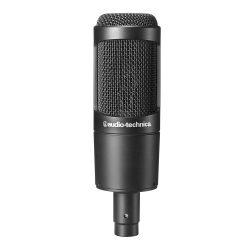
The Rode NT1-A is a little more costly than the Audio Technica offerings, but in return, you’re receiving a more ‘premium’ package. The cradle it comes with has a built-in pop filter, and an XLR cable is included (provided you’re buying the ‘Complete Vocal Recording’ pack).
In terms of application, it’s largely the same. Put this microphone in front of any singer and you’ll be guaranteed a high-quality result (providing the rest of your set-up is up to scratch). You get a lot of clarity that even some more expensive mics don’t have. The NT1-A is a very ‘bright’ mic, meaning the top end of the frequency range is more present than in the Audio Technica options. If this is the sound you’re going for, the Rode is a good choice.
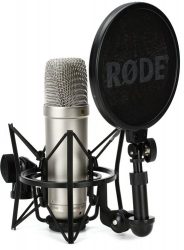
Acoustic Guitar
A large-diaphragm condenser mic is perfect for picking up the detailed tones of an acoustic guitar. If you’ve already picked one up for your vocals, this will do you just fine. If not, take a look at my vocal mic suggestions as they’re all great options for recording acoustic guitar as well.
If you want more versatility when recording acoustic guitar, go for a matched pair of small “pencil” condenser mics. Having a pair of mics will give you the capability of recording in stereo, and give you access to more advanced recording techniques, such as the XY configuration.
The Rode M5s are excellent value for a matched pair and sound really nice on acoustic guitar and other acoustic instruments.

Guitar Amps
An industry standard. You’ll find this one crop up in a few other categories on this list. The SM57 is extremely versatile and especially useful when recording guitar amps.
Story time. I did a blind test of 4 different mics for an expert guitarist to choose from for his album and he picked the SM57 every time. What’s more, is that it was one of the cheapest of the bunch!
They’re also tough, and you can find them second hand for a reasonable fee. You can’t go wrong with adding an SM57 to your collection.
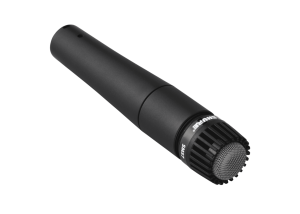
If you’d like an alternative to the SM57, the Audix i5 can be used in the same kinds of applications. You may be surprised at just how different they sound, even when they’re pointing at the same guitar amp. The Audix has a much more ‘scooped’ tone, with less mid frequencies being picked up. I especially recommend the i5, especially for metal.

Bass Amps
Normally I go DI only when recording bass guitar. However, if you want the versatility to record bass amps to capture a certain amp tone, the D112 is a safe option. For such a popular mic, they’re pretty cheap and are a useful tool to have in your kit. There are other budget offerings for bass amp recording, but I’m going to just make this one recommendation. The reason for this is that if you’re going to go cheap, I recommend just sticking with DI recording anyway.
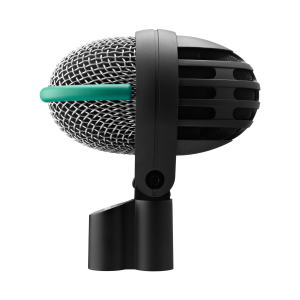
Drums
Overheads
- A second large diaphragm condenser
If you already have a large diaphragm condenser mic for vocals, you’re in luck. All of the suggestions that I’ve made for vocals mics work great as drum overheads (in particularly the Rode) – you’ll need two of them though if you want a stereo spread of the drums.
If you’re strapped for cash though, you may even want to consider just using the one mic. You’ll only be recording in mono, and lose the wide stereo effect – that doesn’t mean you can’t get a solid recording, though. Recording drums in mono can still give you a tight, punchy sound. In addition, you’ll be able to achieve somewhat of a stereo effect if you’re individually micing up the toms.
If you don’t already have another condenser microphone and you’re looking for a cheaper option for recording stereo drum overheads, a pair of Rode M5s are great for picking up the high frequencies of cymbals. They’re versatile little mics and can be used in all manner of placements.

Hi-Hat/Ride
Now, while this is guide is focussed on budget equipment, and £125 might seem pricey initially to just record a hi-hat, bear in mind that this set comes with two mics! Having two matched mics gives you additional capabilities for dual micing other sources, or even adding an extra mic for capturing the ride.
Small ‘pencil condenser’ type mics are great for use on hi-hats, and Rode makes some lovely sounding ones. The M5s are quite bright, making them well suited to hi-hats and rides.

- Nothing!
That’s right, if your overhead mics are well positioned, they’ll pick up your hi-hat just fine. You’re generally going to be using mics that are well suited for high frequencies to capture your cymbals anyway.
Oftentimes, I’ll mic up the hi-hat and end up not even using the hi-hat mic recording in the mix as it sometimes gets a bit much with the overheads in there too! So, if you want to save a bit of money and make the drum mic set up a bit easier, experiment with relying on the overhead mics for your hi-hat.
Snare
The SM57 has been a snare micing mainstay for decades. Being a dynamic mic, it can handle the large amount of sound pressure that a snare drum puts out. The SM57 captures the crack of the snare without losing any of the body. Again, you can’t go wrong with having one or two in your arsenal!
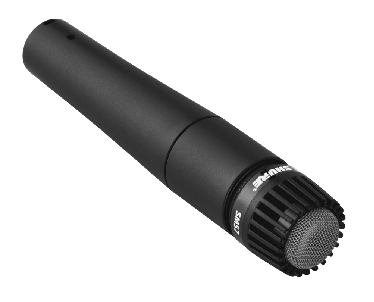
The Audix i5 is an alternative to the SM57 with a slightly ‘snappier’ and more ‘scooped’ tone. This works great for heavier music such as metal. I often use one of these on the top of the snare, with an SM57 pointing at the snare strings underneath. So whichever one you choose, you won’t be disappointed!

Toms
You might be getting bored of seeing this one crop up… but it really is that versatile! The idea is that you’ll have one or two of these in your arsenal that you can call upon for all sorts of applications. While the SM57 won’t quite capture the meaty low end of floor toms, they’re perfectly useable for a punchy tom recording, especially on rack toms.

Buying a drum mic kit is an option for a beginner engineer. You normally won’t find much better value if you’re looking for a whole set. On the other hand, you do lose some versatility as the mics are effectively picked for you.
Audio Technica’s MBDk5 kit comes with 4 tom/snare mics and one kick mic. You also get 4 clips to fix them to the drums without mic stands getting under the drummer’s feet. I bought one of these when I first started engineering. I’ve gradually replaced the individual mics with other mics of my choosing, but I still find myself using the tom mics from time to time as they do the job well.
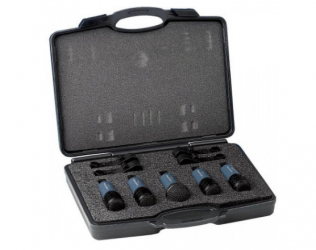
- Nothing!
You technically don’t need to mic up toms as your overheads will pick them up. Eventually you’ll likely want to mic them individually to ensure their punch and low frequencies are captured. When you’re just getting started though, you can make do without.
Kick
The D112 crops up a second time on the list for its low price and great sound for picking up bass frequencies. The Shure Beta 52 is another option, but I prefer the punchier tone of the D112. They’re very good value and a useful mic to have in your kit.

The E602 is a slightly pricier option but a solid choice that works well in heavier music. I tend to use one of these when I’m after that punchy, ‘clicky’ tone that’s synonymous with metal. It’s a solid piece of gear and comes with a built-in screw thread for attaching to mic stands easily.
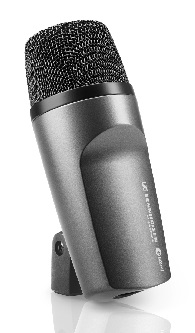
As I mentioned for the toms, for a beginner, buying a drum mic kit can be good value. If you’re thinking of picking up one of these for your toms, you’ll find the kick drum mic that’s included is perfectly serviceable.
I bought one of these when I first started engineering. I don’t tend to use the kick drum mic anymore, but they got me through many drum tracking sessions and left the drummer happy with the sound!

Mic Drop
Hopefully, this gives you a better idea of where to start with picking your first mics. I will be diving deeper into each instrument in separate articles that will include more options, including some cheaper and more premium recommendations.
Drop your email address in the form below if you’d like email updates on when these drop!